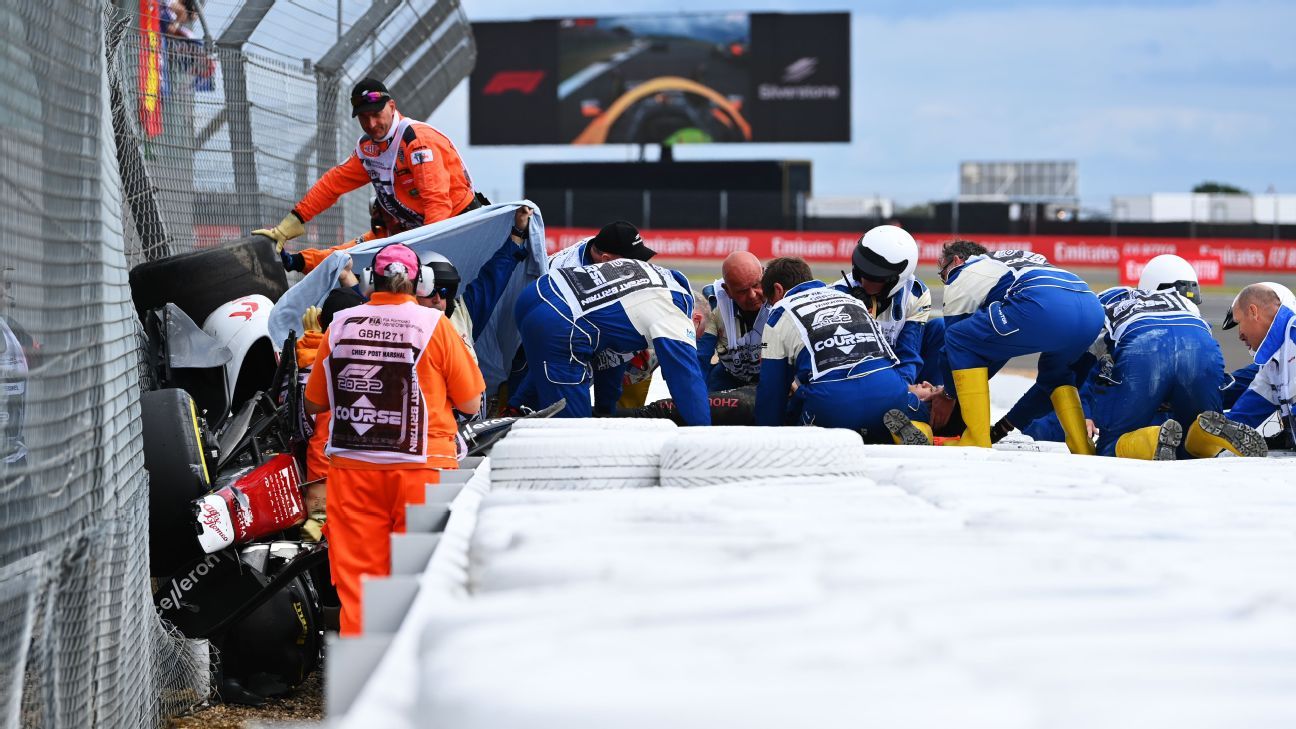In the aftermath of his accident at the British Grand Prix, Alfa Romeo driver Guanyu Zhou tweeted to say the Halo cockpit protection device on his car had saved his life.
The Halo became mandatory on Formula One cars in 2018 after years of FIA research into ways of better protecting a driver’s head in open-cockpit racing. Although the concept is relatively simple, a titanium hoop positioned above the driver’s helmet, it has proved remarkably effective and has protected drivers from serious injury, and in some cases death, on a number of occasions since its introduction.
Nevertheless, the sport’s governing body, the FIA, is always looking at ways to improve safety, and Zhou’s first-lap crash in Silverstone will be no different. As with all serious accidents, the FIA will conduct a full investigation into the incident to learn how to improve safety at future races.
Although the FIA has not yet indicated what the investigation will focus on or when it will be concluded, there are two clear areas of concern following Sunday’s crash.
The first was where Zhou’s car ended up when it came to a rest. After being flipped over as a result of contact with George Russell, the Alfa Romeo skidded upside down through the tarmac run-off area before digging into the gravel beyond and barrel-rolling over the tyre barrier. The last bit of the accident pitched the car over the barrier that is designed to absorb impacts and into the catch-fencing beyond.
The catch-fencing did its job remarkably well by preventing the car from flying into an area near marshal posts, photographers and a grandstand, but in stopping Zhou’s car it also dropped into a tight gap behind the tyre barrier. Being stuck between the tyre barrier and the catch fencing made it more complicated for emergency crews to extricate Zhou from the wreckage, which would have been of even more concern if the Chinese driver had been seriously injured in the accident or the car had caught fire.
Russell, who got out of his car in the run-off area and ran to check on Zhou, said the sport needed to learn lessons about crash barrier and catch fencing placement from Sunday’s accident.
“It was horrible, in that position he was stuck there, [there was] nothing he could have done,” Russell said. “We need to think to avoid a car being stuck in such a fine gap.
“The space between the barriers and the metal fence and he was just stuck in there, nowhere to go. Yeah, something to learn from.”
The other major concern was the absence of the roll hoop on the car after it had come to a halt. The roll hoop, which sits behind the cockpit, is mandatory on all F1 cars and has to withstand forces of 60 kilonewtons laterally, 70 kN longitudinally and 105 kN vertically in order to pass the necessary crash tests for the car to go racing. In theory, the roll hoop is designed so that when the car is inverted it takes the brunt of any impacts while leaving enough space to protect the driver’s head.
However, in Zhou’s accident it appears as though the car’s roll hoop was ripped off when he slid through the run-off area, meaning the only thing left protecting Zhou’s head was the Halo. Part of the FIA’s investigation will likely focus on whether changes can be made to the roll hoop to strengthen it in such a situation, because if the car had come to a halt upside down, Zhou would have been trapped inside.
The fact that Zhou and Alex Albon, who was involved in a nasty accident of his own further down the order, escaped their accidents without major injury is testament to the FIA’s process of investigating and learning from every major incident in F1. Just as was the case with the accidents that led to the introduction of the Halo, it may be the case that the lessons learned from Zhou’s accident at Silverstone will save a life in the future.
